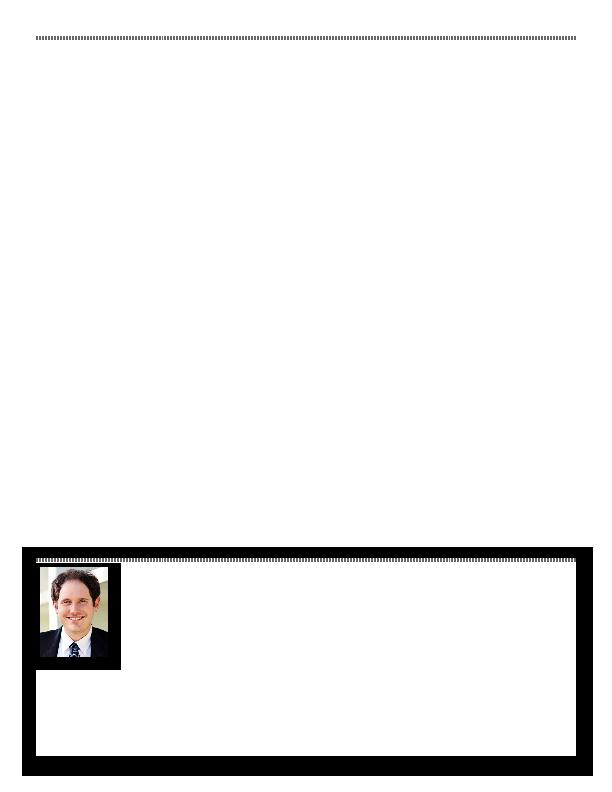
typically tertiary concern that receives
little attention in the drafting process and
can seem unimportant to the uninitiated.
However, the consequences of making
an error with regard to inventorship can
be dire, resulting in the potential loss of
significant revenue and control over who
may or may not practice the invention.
Thankfully, particularly for an employee
inventor, there are many opportunities to
avoid such unfortunate outcomes.
who "contributes to the conception of the
invention" is an inventor. Each inventor
has an undivided equal partial interest in
the entire patent. This means that each
inventor has the legal right to make, use
or sell the invention, and authorize others
to do the same. Moreover, no inventor
has any obligation to share in the
proceeds of their individual monetization
of the invention; each inventor may
exploit the invention to their individual
best interest of all the inventors to transfer
their interests in a patented invention in
a single entity, who can then derive value
from the patent by making and selling
the invention embodied in it, licensing or
various other methods. This is referred to
as assignment, whereby an assignee gains
the rights of the assigning inventors. The
powers of the entity that the interest of the
inventors is transferred to is a completely
separate matter, and should be dealt with
using corporate agreements, such as an
operating agreement.
behooves employers to require employees,
as a condition of their employment, to
assign their interests in any intellectual
property that arises in the course of their
employment. Such clauses are often
included in employment agreements,
employee handbooks, non-competition
agreements, and the like. In such
circumstances, an employee inventor is
under a contractual obligation to assign
and in the future.
Inventorship
a variety of outcomes are possible.
When an inventor was omitted without
deceptive intent, the inventor may be
added by a routine procedure in the
Patent Office. However, that inventor
now has the same undivided interest
in the patent that the other inventors
who were previously named, leaving
the newly-added inventor free to exploit
the patent. This can present a problem
when the patented invention is already
in production, either by the inventors
or by license to a third party. The newly
added inventor may subvert these
efforts by making their own use of the
patent, releasing a competing product
or entering into their own licensing
agreements. Moreover, when a patent
owner is seeking to enforce a patent in
litigation against an alleged infringer,
Malek. He focuses his practice on the prosecution of patents and
trademarks before the United States Patent and Trademark Office
and counseling inventors and businesses on various intellectual
property strategies.
1990 West New Haven Avenue
Suite 201
Melbourne, Florida 32904
Fax: 321.255.2351
uslegalteam.com